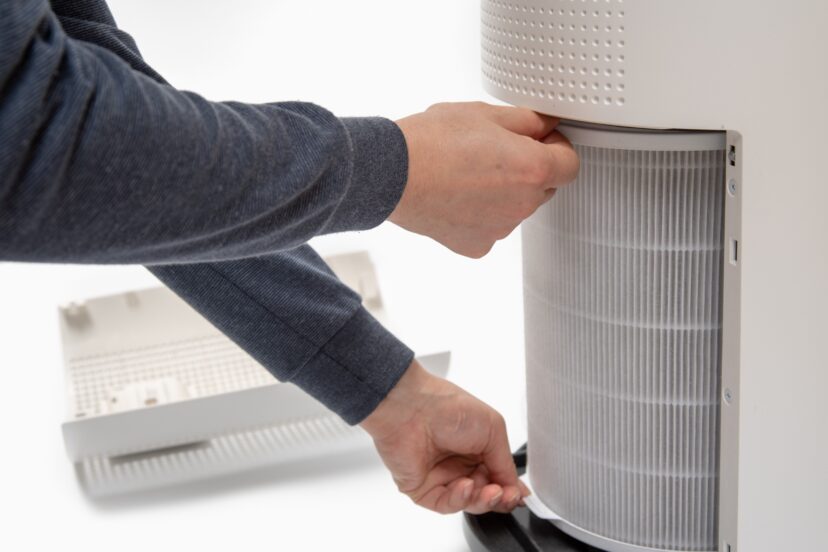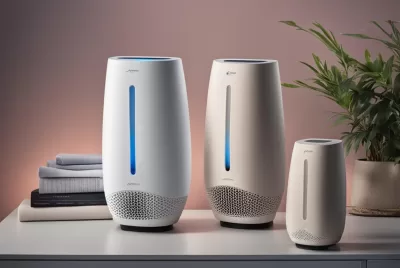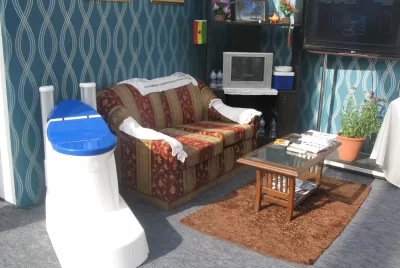Air Purifiers: The Hidden Benefits of Pure Air
"We may earn a commission for purchases made using our links. Please see our disclosure to learn more."
Introduction to Air Purifiers
Imagine walking into your home, a sanctuary from the outside world’s pollution, only to breathe in air still tainted with invisible, unwanted guests. Enter the hero of our story: air purifiers. It may seem like a simple device, yet it has the potential to transform your indoor environment dramatically.
Definition and Basic Functioning of Air Purifiers
Air purifiers, the unsung guardians of your home’s airspace, are devices designed to cleanse the air, removing harmful particles that infiltrate our homes. The idea is simple yet brilliant: a fan draws in air, which passes through a series of filters, each designed to trap different types of particles. The result is cleaner, purer air that your lungs will thank you for.
Air purifiers capture everything from large dust particles and pet dander to microscopic bacteria and viruses. Some even neutralize odors or hazardous chemical gases, giving you air that’s not just clean but also smells fresh.
Importance of Air Quality at Home
Most of us spend the majority of our time indoors, whether it’s in the comfort of our home or in an office environment. Here’s a truth that might startle you: Indoor air can be up to 5 times more polluted than outdoor air, according to the EPA. This statistic flies in the face of the instinctive belief that our homes are a safe haven from outside pollutants.
Poor air quality in your home isn’t just an invisible problem. It can cause or exacerbate health issues such as allergies, asthma, headaches, and even heart diseases or cancer in the long term. This is why ensuring the quality of your indoor air isn’t just a luxury – it’s a necessity for a healthy life.
Types of Air Purifiers
Walking into the world of air purifiers can feel like stepping into a jungle of jargon – HEPA, activated carbon, UVGI, ionizers, ozone generators – what does it all mean? Fear not, as we’re here to guide you through this wilderness and help you understand the different types of air purifiers.
Each type operates differently and is effective against specific pollutants. Some use filters to physically trap particles, while others use methods like ionization or ultraviolet light to neutralize harmful substances. The key is to identify what pollutants you’re most concerned about in your home and then choose the type of purifier that best tackles those.
There’s an air purifier for every home and every need. The challenge is not finding one; it’s finding the right one. But with a little knowledge and guidance, that choice becomes less daunting and more empowering.
Mechanical Filters (HEPA) Air Purifiers
First up on our list of air-purifying champions are the HEPA filters, an acronym that stands for High-Efficiency Particulate Air. These mechanical heroes capture particles as small as 0.3 microns. They’re the vigilantes for tackling household dust, pollen, and pet dander. If you’re an allergy sufferer or a pet owner, a purifier with a HEPA filter can be your greatest ally. Remember though, not all heroes wear capes – some come in cylindrical, pleated filters.
Activated Carbon Filters – Air Purifiers for Odors
Next, we have the Activated Carbon filters, the formidable foes of odors and chemical gases. They’re made from small pieces of carbon that have been treated to be extremely porous. Just one gram of activated carbon has a surface area equivalent to a tennis court. That’s a lot of room to trap the offending molecules of cigarette smoke, volatile organic compounds, and unpleasant odors. If you’re sensitive to smells or have concerns about chemical pollutants, the activated carbon filter is the trusty sidekick you need.
Ultraviolet Germicidal Irradiation – Air Purifiers against germs
Now, let’s turn to the defender of the realm against microorganisms: Ultraviolet Germicidal Irradiation, or UVGI. These purifiers use ultraviolet light to kill bacteria, viruses, and molds. It’s like giving the air in your home a sanitizing sunbath. If your primary concern is illness due to bacteria and viruses, a UVGI purifier can be your household’s unseen protective shield.
Ionizer Purifiers
Then, we have the Ionizer Purifiers, seemingly out of a sci-fi movie, using electrically charged ions to clean the air. These devices emit negative ions that bind with positively charged particles, such as dust, dander, and bacteria, making them heavy enough to fall out of the air. The result? Cleaner air that feels as refreshing as a mountaintop breeze. They’re particularly effective for people with airborne allergies.
Ozone Generators
Lastly, we have Ozone Generators, a bit of a contentious type, as they do clean the air but also produce ozone—a lung irritant. They’re excellent at eliminating strong odors and killing mold and bacteria, but they’re not recommended for use in occupied spaces due to potential health risks. In other words, they’re the renegades of the air purifier world. (However I do use them to purify water…)
What Can Home Air Purifiers Remove?
With all the types of air purifiers explained, you might be asking: what can these home air purifiers remove? They’re like the guardians of the galaxy for your home, tackling a wide range of air pollutants. Dust, allergens, mold spores, pet dander, smoke, odors, viruses, bacteria, chemical gases — you name it, there’s likely a type of air purifier specifically designed to remove it.
The key is to identify what your home needs most. Are you an allergy sufferer? Do you have pets? Concerned about bacteria and viruses? Once you answer these questions, choosing the right purifier becomes a less daunting task. With the right air purifier, you can breathe easy knowing you have a staunch guardian keeping your home’s air clean and healthy.
Dust and Allergens
We begin our exploration into the invisible enemies that air purifiers combat with dust and allergens. These minute particles, although seemingly harmless, can lead to a battlefield of sneezes, runny noses, and itchy eyes. With an air purifier, especially one equipped with a HEPA filter, your home becomes a fortress against these microscopic invaders, capturing and removing them from your breathing space. Victory for your nose and eyes!
Mold Spores
Next on the list is mold, the unseen enemy that thrives in damp and humid spaces. Mold releases spores into the air that, when inhaled, can lead to health issues like throat irritation, coughing, or even lung infections in people with weakened immune systems. Worry not, because UVGI and HEPA filter-equipped air purifiers are primed to neutralize these nefarious foes, preventing them from establishing a colony in your home.
Pet Dander
Now, let’s talk about pet dander. We love our furry friends, but the dander they leave behind can cause allergic reactions and asthma symptoms in some people. Your four-legged companions needn’t be the villains of this tale, though. With an air purifier in your home, especially one with a HEPA filter or ionizer, you can enjoy the company of your pets without the sneezes.
Smoke and Odors
Smoke and odors, the uninvited guests, can linger in your home, making it uncomfortable and unhealthy. Whether it’s the remnants of last night’s burned dinner or the stench from your gym clothes, smoke and odors are something we’d rather live without. Enter the activated carbon filter air purifier. It absorbs these unpleasant guests, leaving your air clean and fresh.
Viruses and Bacteria
The final adversaries we face are viruses and bacteria. They’re invisible, pervasive, and potentially harmful. With an air purifier equipped with UVGI or HEPA filters, these microscopic threats can be eliminated or significantly reduced, creating a safer, healthier home for you and your loved ones.
Factors to Consider When Choosing an Air Purifier for Home
Choosing an air purifier is like choosing a knight to protect your kingdom. You want someone who’s capable and trustworthy. To help you make the right decision, consider factors such as the type of pollutants you want to remove, the size of your space, your budget, and any specific needs you might have, like allergies, asthma, or pets.
Think about the maintenance of the device too. Filters need to be replaced periodically, and some types of filters might be more expensive than others. Finally, consider the noise level – you want your knight to be effective, but you don’t want him charging around loudly all day and night.
Remember, the goal is to enhance your indoor environment, creating a safe, clean, and pleasant atmosphere for you and your family. With a little research and careful consideration, you’ll find the perfect air purifier to meet your needs.




